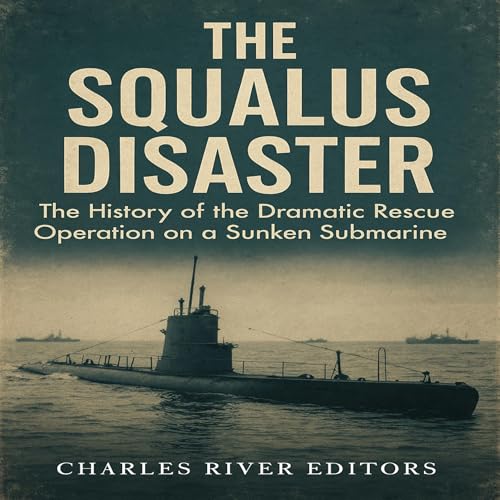
The Squalus Disaster
The History of the Dramatic Rescue Operation on a Sunken Submarine
No se pudo agregar al carrito
Add to Cart failed.
Error al Agregar a Lista de Deseos.
Error al eliminar de la lista de deseos.
Error al añadir a tu biblioteca
Error al seguir el podcast
Error al dejar de seguir el podcast
Obtén 3 meses por $0.99 al mes + $20 de crédito Audible
 Exclusivo para miembros Prime: ¿Nuevo en Audible? Obtén 2 audiolibros gratis con tu prueba.
Exclusivo para miembros Prime: ¿Nuevo en Audible? Obtén 2 audiolibros gratis con tu prueba.
Compra ahora por $6.95
-
Narrado por:
-
KC Wayman
It takes a special type of person to serve in a nation’s navy, especially on long voyages that separate men and women from their loved ones, and no service is both loved and hated as that aboard submarines, for very few people ever serve on them on a whim. For one thing, the psychological impact of being trapped for long periods underwater in tight, cramped quarters is more than many people can stand. Also, submarine service is uncharacteristically hazardous; after all, if a surface vessel is sunk, the crew has a reasonable chance of escaping death in lifeboats or being rescued out of the water by another ship. Conversely, if a submarine is badly damaged while submerged, the crew’s chances of survival are at best remote.
Given that there’s such little margin for error in a submersible, many submarine losses remain sources of intrigue and mystery, but in American history, few rival the tragedy and drama aboard the Squalus in 1939. On May 23 of that year, the Squalus, one of the U.S. Navy’s newest submarines, was undertaking the latest in a series of test dives off the coast of New Hampshire. She had been commissioned less than three months before and represented the cutting-edge of new submarine technology. Provided with eight torpedo tubes and a three-inch deck gun, Squalus had a range of over 11,000 miles and was capable of running at over 20 knots on the surface. This was a formidable warship, and the test dives undertaken in May were a routine part of preparing the submarine for service.
After successfully completing a series of dives over the previous days, on the 23rd, the Squalus undertook practice for one of the most challenging maneuvers, a rapid dive performed while the sub was running at full speed on the surface.


